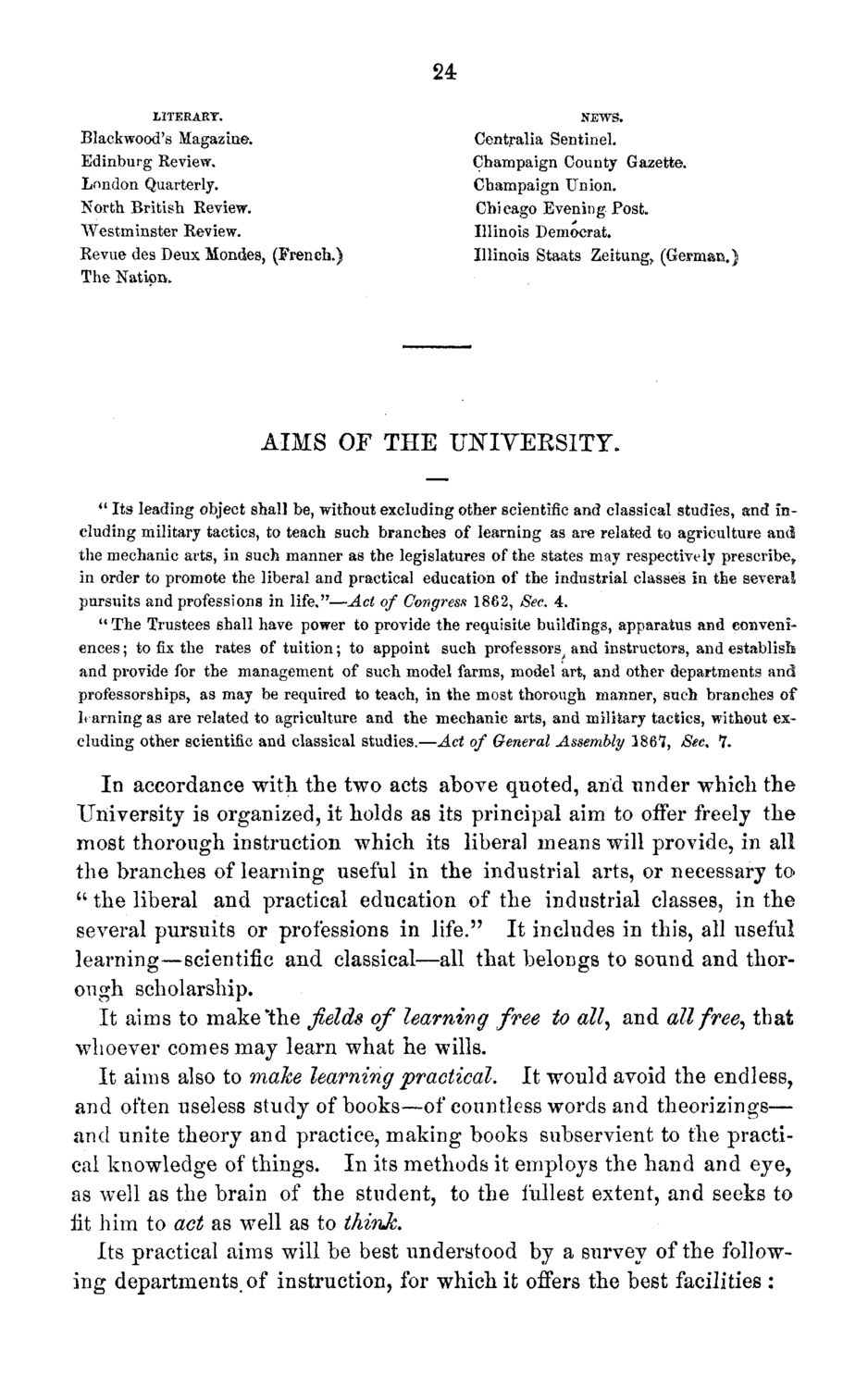| |
| |
Caption: Board of Trustees Minutes - 1871
This is a reduced-resolution page image for fast online browsing.

EXTRACTED TEXT FROM PAGE:
24 LITERARY. NEWS. Blackwood's Magazine. Edinburg Review. London Quarterly. North British Review. Westminster Review. Revue des Deux Mondes, (French.) The Nation. Centralia Sentinel. Champaign County Gazette. Champaign Union. Chicago Evening Post. Illinois Democrat. Illinois Staats Zeitung, (German.) AIMS OF T H E UNIVERSITY. " Its leading object shall be, without excluding other scientific and classical studies, and including military tactics, to teach such branches of learning as are related to agriculture and the mechanic arts, in such manner as the legislatures of the states may respectively prescribe,, in order to promote the liberal and practical education of the industrial classes in the several pursuits and professions in life,"—Act of Congress 1862, Sec. 4. " The Trustees shall have power to provide the requisite buildings, apparatus and conveniences; to fix the rates of tuition; to appoint such professors^ and instructors, and establish and provide for the management of such model farms, model art, and other departments and professorships, as may be required to teach, in the most thorough manner, such branches of learning as are related to agriculture and the mechanic arts, and military tactics, without excluding other scientific and classical studies.—Act of General Assembly 186*1, Sec, *7. In accordance with the two acts above quoted, and under which the University is organized, it holds as its principal aim to offer freely the most thorough instruction which its liberal means will provide, in all the branches of learning useful in the industrial arts, or necessary to " the liberal and practical education of the industrial classes, in the several pursuits or professions in life." It includes in this, all useful learning—scientific and classical—all that belongs to sound and thorough scholarship. It aims to make t h e fields of learning free to all, and attfree, that whoever comes may learn what he wills. It aims also to make learning practical. It would avoid the endless, and often useless study of books—of countless words and theorizings— and unite theory and practice, making books subservient to the practical knowledge of things. In its methods it employs the hand and eye, as well as the brain of the student, to the fullest extent, and seeks to fit him to act as well as to think. Its practical aims will be best understood by a survey of the following departments, of instruction, for which it offers the best facilities :
| |